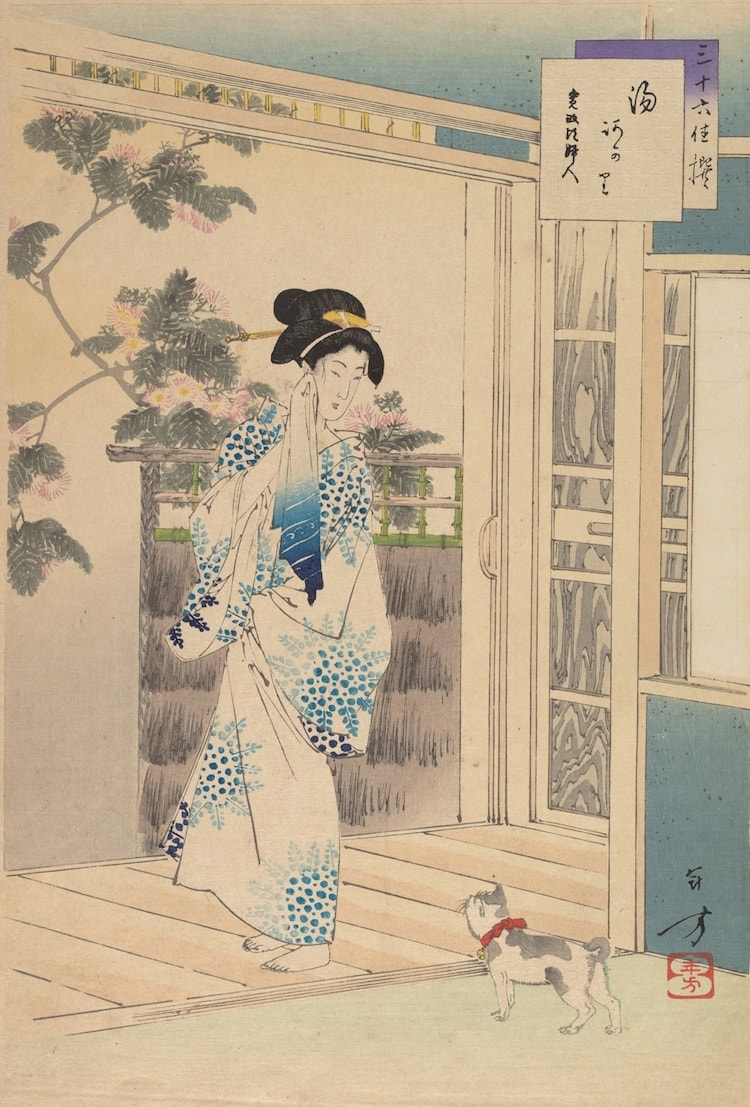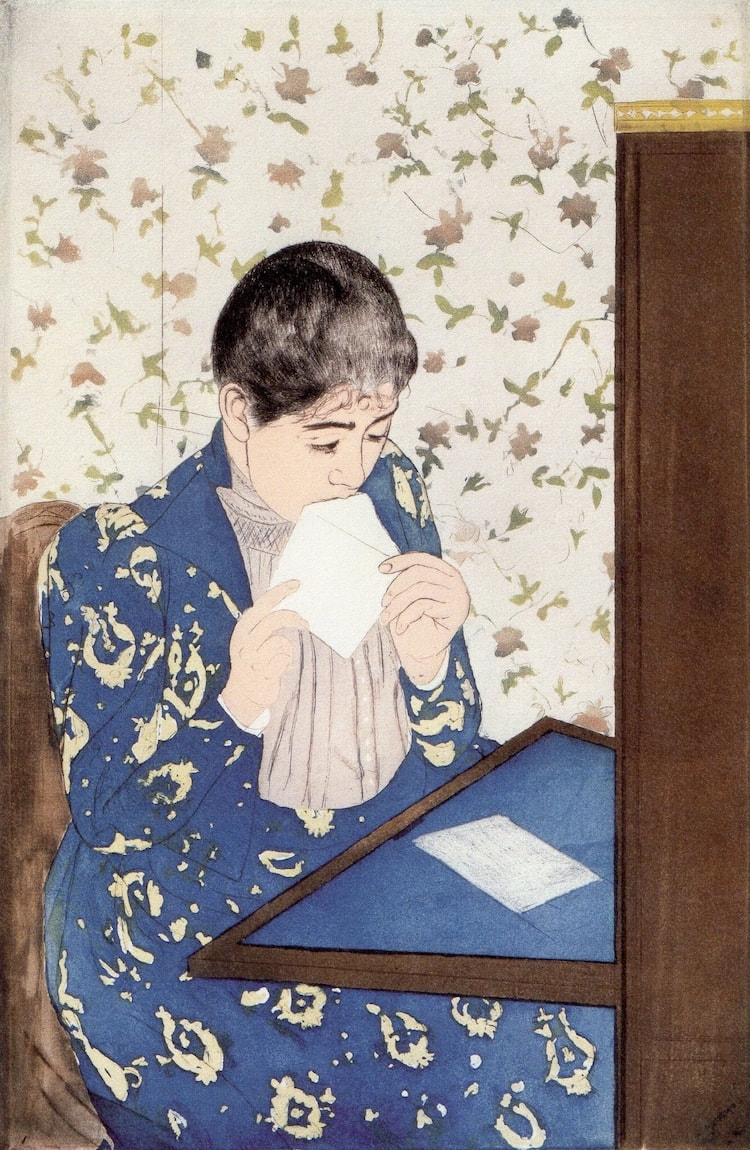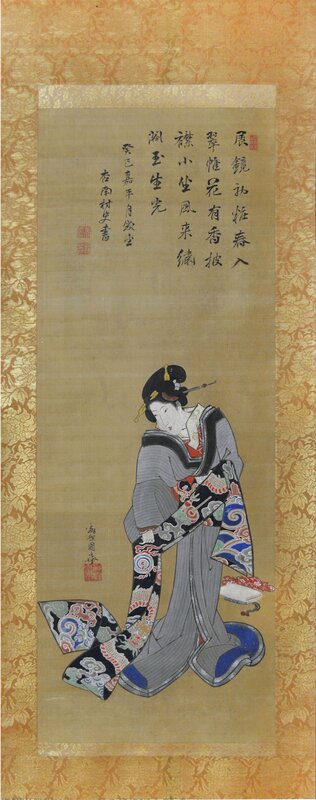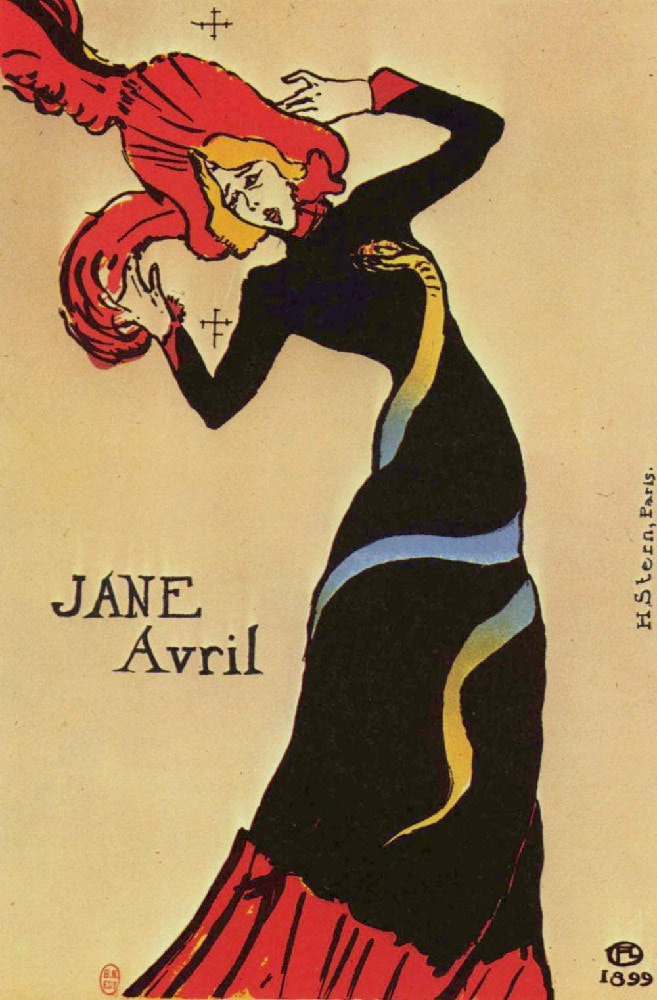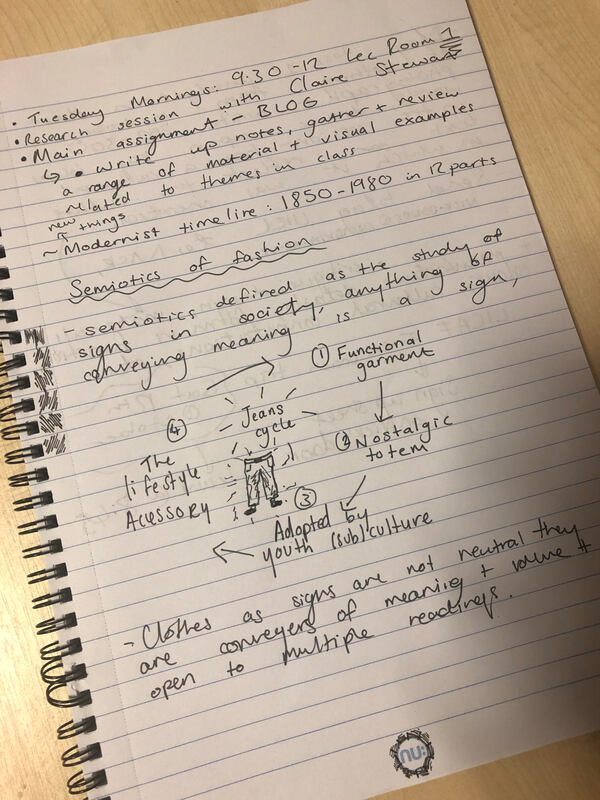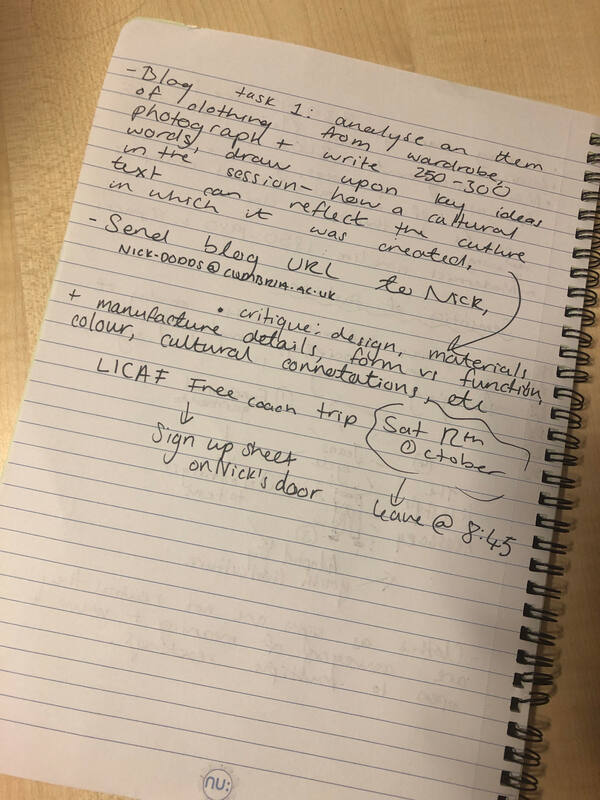|
Top left: 'After the Bath, Woman of the Kansei Era' by Toshikata Mizuno (1893) Top right: 'The Letter' by Mary Cassatt (1891) Bottom Left: 'Bijin Dressing Up For the New Year' by Kunimaru (1821) Bottom right: 'Jane Avril (Snake Lady)' by Henri de Toulouse-Lautrec (1899) Japonisme is the European, especially French adoption of Japanese fashion and art during the late 19th century. At this time, the art of Japanese woodblock prints (ukiyo-e) had an enormous impact on European artists. After Japanese trade with the west increased in the 1850's because of American military threats, an influx of Japanese art, especially the mass produced commercial woodblock prints caught the attention of the western art world. Stylistically speaking, the bold passages of flat colour arranged in asymmetrical compositions, lack of three dimensional perspective spaces, and crisp bold lines were all adopted by European graphic designers and illustrators.
Mary Cassatt was an American artist of French descent. The artist stated that she "hated conventional art", however after visiting a large exhibition of ukiyo-e prints at the Ecole des Beaux Arts in Paris during 1890, she found a fresh approach to the depiction of common events in women's lives. To show her appreciation, Cassatt produced a set of 10 colour etchings in open admiration of the prints' subjects, compositions and technical innovations. Cassatt adapted the ukiyo-e theme of women's everyday lives to scenes showing a modern French woman as she went about caring for a child, trying on a dress and other mundane activities. Notably, Cassatt owned Japanese prints by Kitagawa Utamaro, and displayed them in her home alongside her own work. Like Cassatt, Utamaro was inspired by everyday events. The influence of Japanese prints can be seen throughout Cassatt's etchings, particularly 'The Letter', in the bold patterns, strong blocks of colour and sense of flattened, compressed space. Some of the qualities that Cassatt admired in Japanese Woodblock prints included unusual angles and shapes, strong linear outlines, an emphasis on flat planes, asymmetrical compositions, aerial perspective and decorative motifs. Another artist who found inspiration in Japonisme is Henri de Toulouse-Lautrec. Lautrec was particularly entranced by the fresh visual vocabulary provided by the daring compositions and love for the quotidian found within ukiyo-e prints. In 1883, Lautrec attended the Exposition Retrospective de l'Art Japonais. This visit sparked a fire in Lautrec as he began to avidly collect Japanese prints, even trading his own paintings for prints he particularly desired. The influence of the Japanese prints that he collected appears especially through the artist's lithographs. Lautrec produced illustrations, posters, invitations, programs, and menus all through the lithographic medium, and all reflecting an increasing influence of Japanese prints. Like the ukiyo-e artists in japan, Lautrec embraced the world of actors, courtesans, and other figures of the pleasure culture. Lautrec integrated a muted colour palate, bird's eye perspective, flattened spaces and colours, and complex composition into his already vibrant works. Elongated composition became popular with French artists following the introduction of Japanese pillar prints and 'kakemono' or hanging scrolls. Lautrec demonstrates this influence in his lithograph 'Jane Avril (Snake Lady)', as her body seems to be lengthened against the paper, mirroring the posture of Kunimaru's 'bijin'. The empty background emphasises the silhouette of the women in each artwork.
0 Comments
On Thursday the 19th of September, after a tutorial with Tony, he noticed a carrier bag that I was holding and asked, “What’s in the magic bag?”. Inside that ‘magic’ bag was a dark red corduroy jacket that I had just picked up from Primark, (go-to clothes shop for a student budget in my opinion). While I hadn’t intended to buy a new jacket when I walked into the store, it was conveniently placed near the front entrance, and got me thinking about the up and coming cold Cumbria weather. Another selling factor in making me impulsively buy this new jacket was the fact that I particularly like the corduroy material. Corduroy has a distinct pattern, known as a ‘cord’ or a ‘wale, and modern corduroy is most commonly composed of tufted cords. The origins of corduroy are among items worn by townspeople in industrial areas. Corduroy has existed for a long time and was used in Europe since the 18th century, however only in the 20th century did it become a global material, most notably expanding in popularity in the 1970’s. My Primark corduroy jacket cost £23, which is a lot cheaper compared to similar jackets from brands such as H&M (£35) and M&S (£50). Looking inside the jacket, the label states “MADE IN CHINA”. Notably, Primark’s supplier’s are based across 5 continents, with the vast majority of 550 being located in China, and many products are known for being made in china due to cheaper labour costs, therefore it is likely that this is the reason why Primark can offer such low prices for their garments.
|
